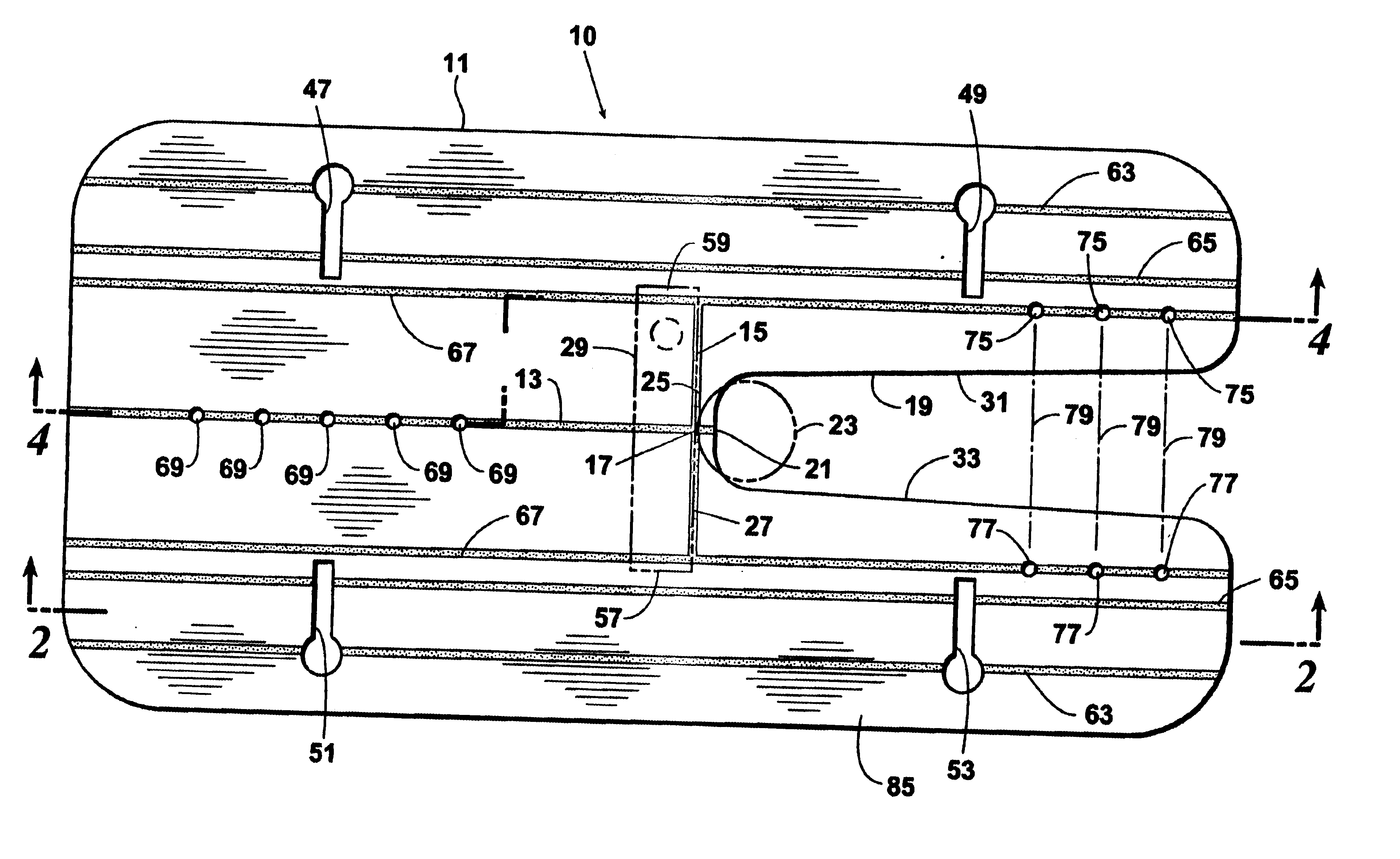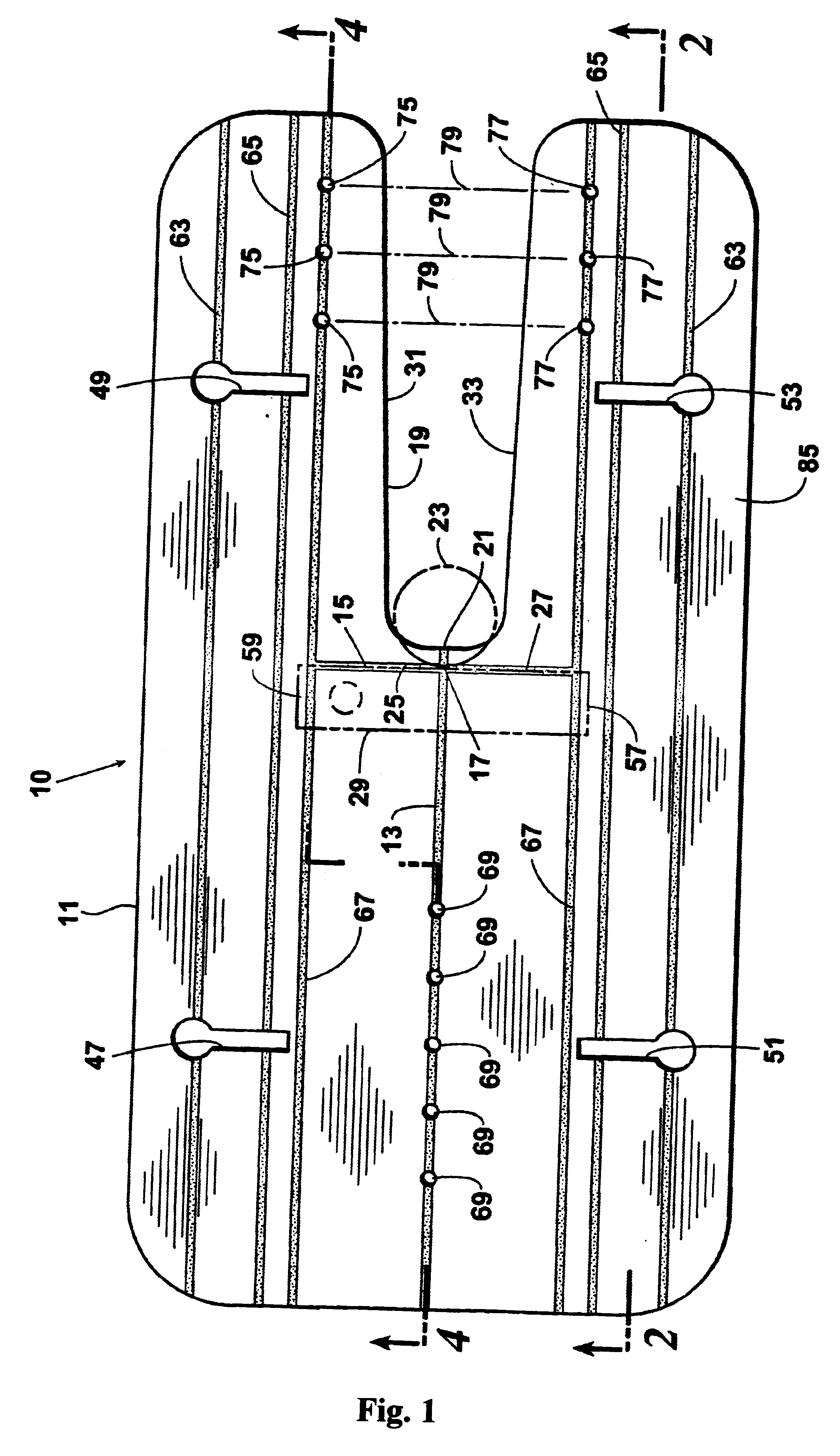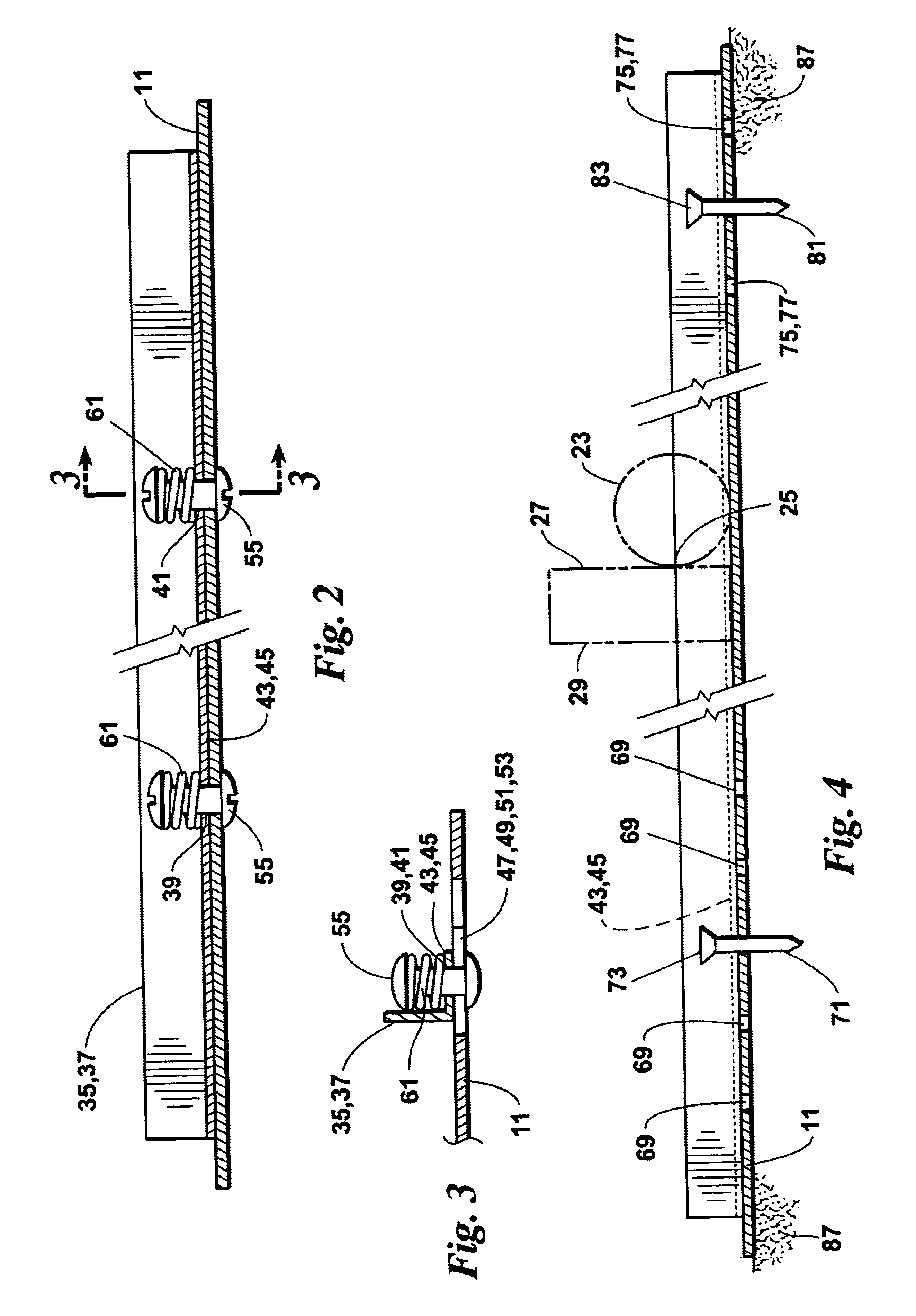Alignment guide for practice putting
a technology of alignment guide and putting putter head, which is applied in the direction of golf clubs, sport apparatus, gymnastics exercise, etc., can solve the problem of the likely acceleration of the putter head at the moment of impa
- Summary
- Abstract
- Description
- Claims
- Application Information
AI Technical Summary
Benefits of technology
Problems solved by technology
Method used
Image
Examples
Embodiment Construction
Looking first to FIG. 1, a preferred embodiment of the alignment guide 10 is illustrated. The guide 10 has a flat, substantially rigid base 11 with perpendicular target and putter face lines 13 and 15 which intersect at a point 17 on an interior portion of the base 11. An unobstructed gap 19 extends away from the putter face line 15 along the target line 13 from a beginning point 21 which is less than a radius of a golf ball 23 from the putter face line 15. Thus, a golf ball 23 can rest; in the gap 19 with the intended point of contact 25 on the golf ball 23 being tangent to the face 27 of the putter head 29 when the face 27 is aligned on the putter faceline 15. It is preferred that the gap 19 be symmetrical in relation to the target line 13. It is also preferred that the gap 19 have edges 31 and 33 which diverge from the beginning point 21 of the gap 19 so as not to impede the travel of the ball 23 after it has been struck.
Looking at FIGS. 1, 2 and 3, the guide also includes a pair...
PUM
 Login to View More
Login to View More Abstract
Description
Claims
Application Information
 Login to View More
Login to View More - R&D
- Intellectual Property
- Life Sciences
- Materials
- Tech Scout
- Unparalleled Data Quality
- Higher Quality Content
- 60% Fewer Hallucinations
Browse by: Latest US Patents, China's latest patents, Technical Efficacy Thesaurus, Application Domain, Technology Topic, Popular Technical Reports.
© 2025 PatSnap. All rights reserved.Legal|Privacy policy|Modern Slavery Act Transparency Statement|Sitemap|About US| Contact US: help@patsnap.com



